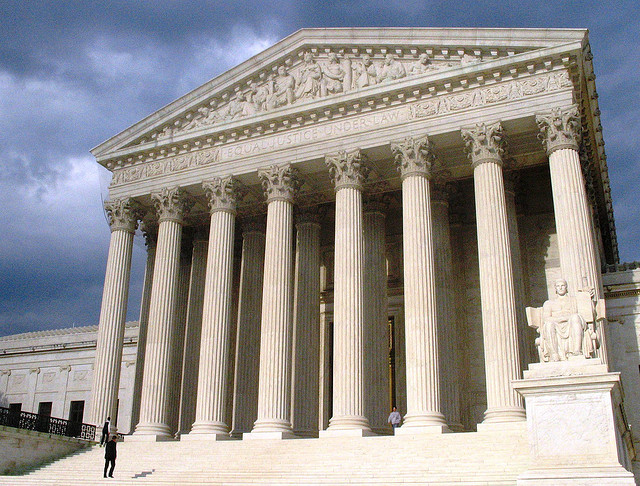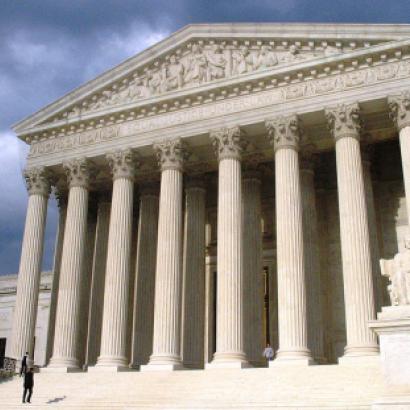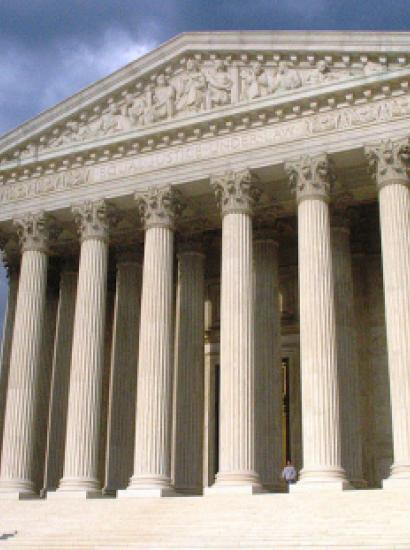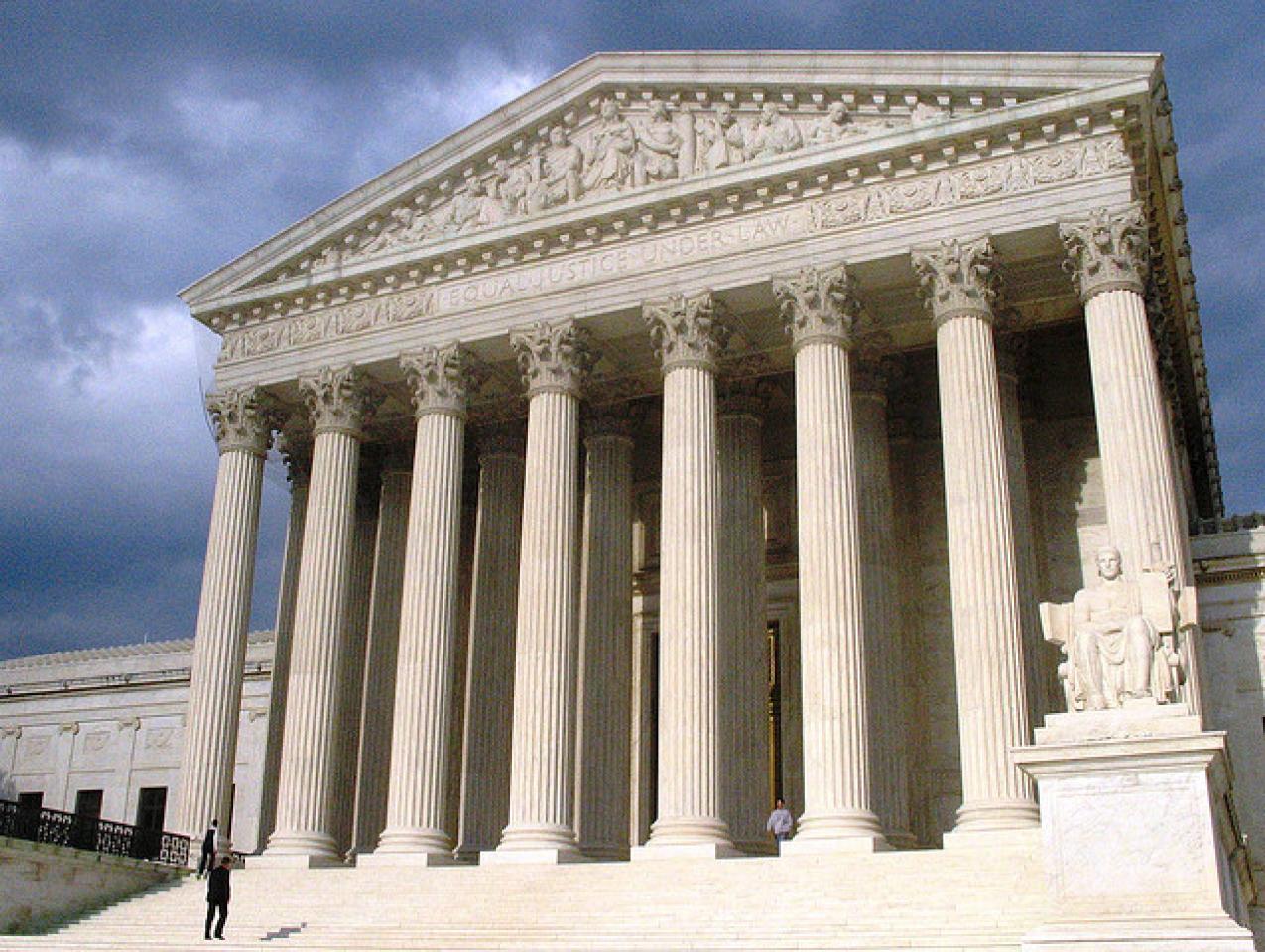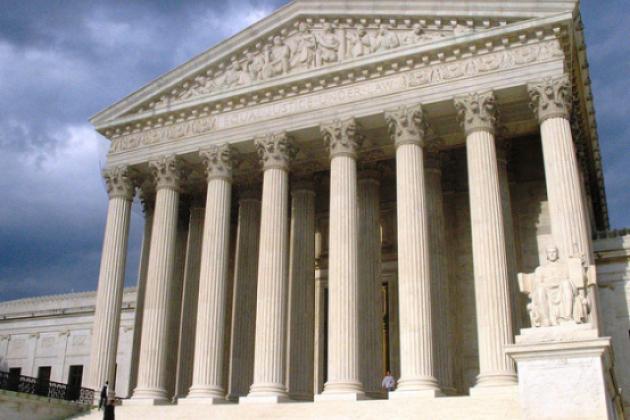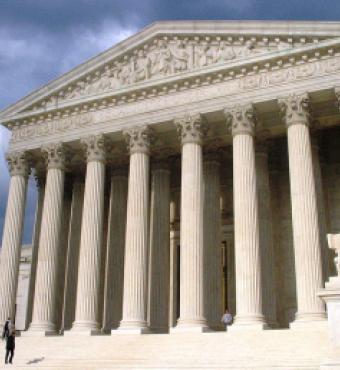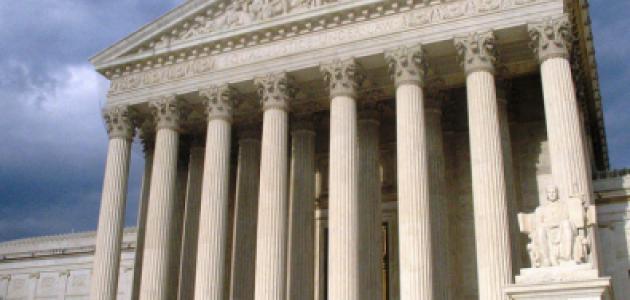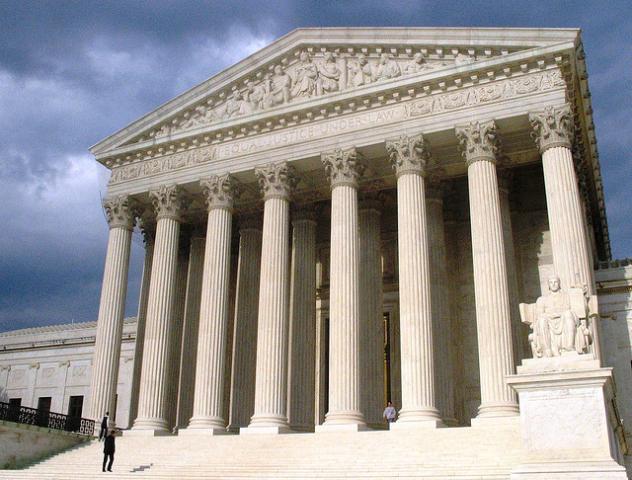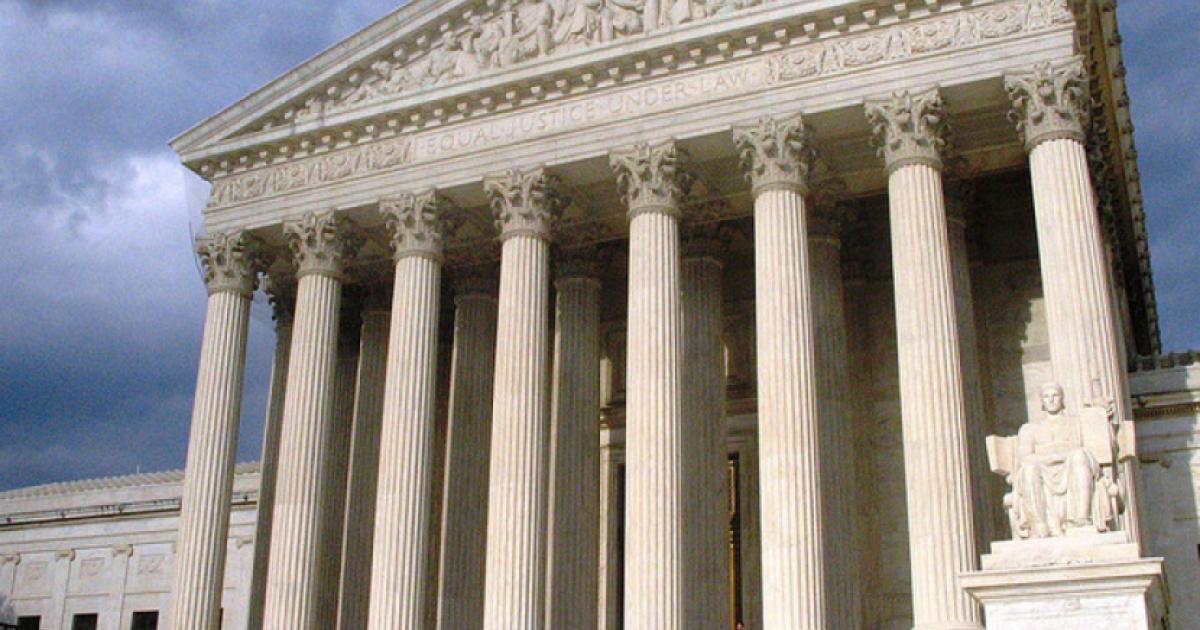- Law & Policy
- Politics, Institutions, and Public Opinion
- Judiciary
This past week in Dobbs v. Jackson Women’s Association, the Supreme Court heard extended and heated arguments on whether Roe v. Wade (1973), a fixture of American constitutional law for nearly fifty years, should be overturned. As envisioned by Mississippi’s solicitor general, Scott Stewart, abortion regulation would then be turned back to the legislative branches of the states, subject to any constraints that individual states might impose under their respective constitutions. Dobbs arose because of a Mississippi law that bans most abortions after fifteen weeks, long before the third trimester of pregnancy specified in Roe as the time of viability (around twenty-five or twenty-six weeks), at which the state may protect not only maternal health—itself only allowed in the second trimester—but also the life of the fetus.
This case thus cuts into the heart of the constitutional theory. It is widely accepted that any Bill of Rights necessarily limits the right of legislative majorities from trenching on key individual rights. No one denies that proposition at the most basic level, for otherwise a bare political majority is free to target certain despised groups for death, imprisonment, or confiscation. But that general principle itself does not articulate a coherent answer to the question of which laws protecting individual rights should be respected and which not.
One way to address this question is to hold that traditional practices should inform the social and constitutional judgment on placing that line. Long-standing laws should receive a presumption in their favor, while more modern innovations that lack that historical pedigree should not. That test affirms rules and practices that have stood the test of time. That approach is, of course, far from perfect, because it also gives free rein to established systems of slavery or segregation, and thus could lend legitimacy to decisions like Plessy v. Ferguson (1896), which insulated from constitutional attack, under an expansive view of the state police power, laws that forbade interracial marriage, while simultaneously upholding laws segregating railroad cars, buses, stores, and public education.
Hence, the dominant counterweight to historical practice is some version of the basic Lockean natural-rights perspective that that all individuals are endowed equally with some natural rights to liberty and personal autonomy, which in turn become embedded in the various freedoms dealing with contract, property, religion, and speech, all of which receive explicit constitutional protection.
Historically, Roe’s novel framework does not satisfy these twin conditions. Indeed, it was adopted out of whole cloth, with no advance warning. Prior to Roe criminal abortion statutes were, as Justice Harry Blackmun freely acknowledged, wholly unchallenged long before the adoption of the Fourteenth Amendment in 1868. By no moral or legal conception do these anti-abortion statutes belong in the same moral universe as slavery and segregation, both of which were fiercely condemned throughout their long careers. No one would object if the states repealed minimum wage or maximum hour laws, given their opposition to “judicial legislation.” No one could defend segregation and slavery because they were instituted by legislation and not judicial decision. Abortion was made criminal by statute. Nonetheless, Blackmun struck them all down in one meandering opinion, which, as I argued at the time, does more to baffle than inform.
Back in 1973, the bête noire of American constitutional law was Lochner v. New York, a 1905 Supreme Court decision that struck down a state law that made it a criminal offense to hire certain classes of bakers for more than ten hours per day or sixty hours per week. Lochner held that occupational freedom for employers and employees alike was part of the “liberty” protected under the Due Process Clause of the Fourteenth Amendment, which provides that no person shall be “deprived of life, liberty, or property without due process of law.” All too often modern constitutional lawyers, including Chief Justice Roberts, inexcusably treat Lochner with as much disdain as Plessy.
Yet these two cases are complete opposites. Plessy rested on a narrow conception of personal liberty and a broad definition of the police power as is evident in this chilling passage: “Laws forbidding the intermarriage of the two races may be said in a technical sense to interfere with the freedom of contract, and yet have been universally recognized as within the police power of the State.” Technically? In contrast, Lochner combined a broad conception of liberty with a narrow definition of the police power, which refused to include “labor” laws under the police-power rubrics of health and safety.
Sadly, Lochner was swept away by progressive New Deal jurisprudence. The phrase “substantive due process” was dismissed as a contradiction in terms, an unhinged “natural law” club that allowed rogue judges the latitude to strike down laws that they deemed “unwise or dangerous.” Yet, ironically in Roe, Blackmun gives high marks to Justice Oliver Wendell Holmes in a famous Lochner dissent:
[The Constitution] is made for people of fundamentally differing views, and the accident of our finding certain opinions natural and familiar or novel and even shocking ought not to conclude our judgment upon the question whether statutes embodying them conflict with the Constitution of the United States.
Holmes penned this passage to support the claim that the Constitution should give the legislature wide discretion in dealing with laws as “injudicious, or if you like tyrannical as this,” even when those novel schemes interfere with well-established rights. Indeed, the statute at issue in Lochner was passed, as David Bernstein has shown, not to protect needy bakers from their employers but to insulate more established, larger, and more secure (usually unionized) bakers from competition with nimbler immigrant bakers using a different business model. The immigrant bakers worked a single shift on the job by baking the bread at night and collecting it in the morning, after a night’s sleep on the premises (hence the long hours) in between.
A thoroughly confused Blackmun proceeded to treat this Holmes broadside as standing for the opposite proposition: namely, that wide differences of opinion on many key issues means that state legislatures should not be able to impose their views on women seeking an abortion. The point here is doubly ironic, because the overturn of Lochner has led to the introduction of the most destructive form of labor regulation in the form of unionization, minimum wage, and overtime laws that have sharply reduced competition in labor markets and overall human welfare. So, after Roe, it is impermissible to protect unborn children (however described) against destruction, but permissible to protect labor unions against non-union workers.
It is no wonder, then, that Roe has been under constant attack since 1973, because it is vulnerable both as a usurpation of legislation authority over the criminal law and as a departure from basic moral norms. Thus, the contrast with economic liberties is striking because Lochner does not rest, as the critics constantly carp, on some unarticulated set of subjective preferences. Instead, the freedom of contract is closely tied to social welfare because it produces gains from trade for all contracting parties that should be respected, unless one of two conditions hold. First, there is some breakdown in the bargaining process, as with force and fraud. Second, there are some adverse third-party effects, which are caught by the narrow version of the police power accepted in Lochner, protecting the health and safety of the population at large. Neither of these conditions is remotely satisfied, albeit for very different reasons, in either Plessy or Roe.
It is therefore no surprise that the defenders of Roe on and off the court face a difficult challenge, which was made more difficult by Justice Sonia Sotomayor’s impolitic insinuations in oral argument that any judicial repudiation of Roe will create a “stench” in “public perception,” for engaging in political acts. In a more restrained way, Virginia law Professor Richard Re has urged gradualism in reversing Roe in order to avoid creating political instability. But this compromise will prove a hard sell to conservative commentators like Edward Whalen, who despair of Roe’s weak analytical foundation. This point has some force, as the political controversy is likely to continue unabated no matter which way Dobbs comes out, given the equal vehemence of its supporters and detractors.
In one key respect, however, Roe does differ from Plessy. No one thought that when Plessy was overruled in Brown v. Board of Education (1954) that segregation could be restored by state legislative action. Yet even the foes of Roe recognize that the abortion debate can and should be returned to the state legislatures, which are under no obligation to take a uniform view on the subject. Already, New York, Illinois and several other states have passed laws to reaffirm Roe as a legislative matter if the case is overturned, thereby removing its constitutional taint. Other states will split both ways, with many others throughout the South and Midwest imposing sharp limitations on abortions. These legislative responses will not put an end to the moral debates over the legitimacy of abortion, but they will do much to take the Supreme Court out of the storm center.
Most Americans still support Roe, whatever their moral qualms about abortion. How this transition might work out is still very much anyone’s guess. But we are likely to find out soon, for more likely than not Roe will be either overturned or modified so that the Mississippi law stands, when the court splits, 6–3, along conservative and liberal lines.







